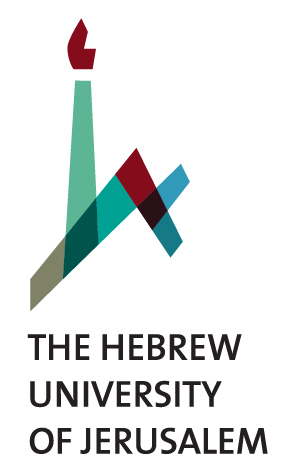Isaiah
The oldest copies of the prophetic book of Isaiah are the remains of 22 scrolls (according to the official count) found among the Dead Sea Scrolls, including fragments of 18 from Qumran Cave 4, indicating the popularity of the book in the Second Temple period.
While the scrolls found in Qumran Cave 1—including a complete copy of the entire book—have been the subject of very detailed and in-depth studies, the other scrolls, especially those from Cave 4, have not been the focus of similar interest, and the few existing discussions treat them exclusively from the point of view of their text-critical evidence. The project offers the first systematic attempt to consider these understudied manuscripts in and of themselves.
It begins with an investigation of their material properties as scribal artefacts, taking advantage of state-of-the art digital techniques for dealing with fragmentary scrolls and restoring their original layout. It continues with an analysis of their contents, orthographic and historical-linguistic profiles, relying on the most updated resources available for such studies and taking into consideration the possible performative functions of the manuscripts as well as their scribes’ exegetical approaches.
These stages set the ground for revisiting the text-critical information embedded in the Isaiah scrolls, focusing particular attention on the potential implications of the text-critical data for the critical understanding of the compositional and redactional history of Isaiah, as well as its early reception in the Hellenistic-Roman period.
The investigation of the textual transmission of Isaiah, as recorded among the Dead Sea Scrolls, thereby becomes a window through which to understanding fundamental processes of composition, redaction, interpretation, and reception that were operative in the history of prophetic literature in general, thus shedding light on the backstage of the formation of Judaism (and later Christianity) as scriptural religions. The project is supported by Grant No. 1000/20 of the Israel Science Foundation.

Publications
Noam Mizrahi, “The Textual History and Literary Background of Isa 14,4,” Zeitschrift für die alttestamentliche Wissenschaft 125.3 (2013), 433–447. [De Gruyter]
Noam Mizrahi, “Writing as Reading: Aspects of the Interpretive Transmission of Isaiah in Qumran – 4QIsac (4Q57) for Isa 24,2.7.15 as a Case Study,” in Transmission and Interpretation of the Book of Isaiah in the Context of Intra- and Interreligious Debates, ed. Florian Wilk and Peter Gemeinhardt (BETL 280; Leuven: Peeters, 2016), 29–59.
Noam Mizrahi, “Isaiah between Transmission and Reception: Isaiah 58:13–14 according to 4QIsan (4Q67),” in The History of Isaiah: The Formation of the Book and its Presentation of the Past, ed. J. Todd Hibbard and Jacob Stromberg (FAT 150; Tübingen: Mohr Siebeck, 2021), 115–129. [Mohr Siebeck]
העותקים הקדומים ביותר של ספר ישעיה הם שרידיהם של 22 כתבי-יד (לפי המניין הרשמי) ממדבר יהודה, כולל 18 מגילות ממערה 4 בקומראן, המעידים על תפוצתו הרחבה של הספר בשלהי ימי הבית השני.
שתי מגילות ממערה 1, כולל עותק שלם של הספר כולו, זכו למחקרים רבים ומעמיקים, אך שאר כתבי-היד – ובמיוחד אלה ממערה 4 – לא זכו לעניין דומה, והדיונים הספורים בהם מטפלים בהם אך ורק בתור 'נשאי גרסאות'. הפרויקט הנוכחי מציע אפוא את הניסיון השיטתי הראשון לנתח את כתבי-היד הללו בפני עצמם.

חקירה זו של מגילות ישעיה פותחת בניתוח מאפייניהן החומריים, תוך הסתייעות במיטב הטכניקות העדכניות בתחום הדיגיטלי לשם התמודדות עם קטעי מגילות ושחזורם החומרי. היא ממשיכה בניתוח פילולוגי של תוכן המגילות, מיון שיטות הכתיב הנוהגות בהן ואפיונן הבלשני-היסטורי – כל זאת מתוך הסתייעות במיטב המשאבים הזמינים למחקר מסוג זה ומתוך התחשבות בקשת השימושים וההקשרים הביצועיים האפשריים בעותקי הספר הקדומים ובמערך המוטיבציות הפרשניות שהנחו את סופריהן ומתגלות בין השיטין.
שלבי חקירה אלה מקדמים ניתוח מחודש של המידע הגלום במגילות ישעיה לגבי נוסח הספר, בתשומת לב מיוחדת להשלכותיו האפשריות להערכה הביקורתית של תולדות התהוותו הספרותית ועריכתו מצד אחד ותולדות פרשנותו והתקבלותו בעת העתיקה מצד אחר. כך הופך חקר תולדות הנוסח של ספר ישעיה לצוהר להשקיף דרכו על תהליכי יסוד של חיבור, עריכה, פרשנות, מסירה והתקבלות שפעלו בתולדותיה של ספרות הנבואה המקראית, וכך מוארים 'אחורי הקלעים' של שלבי ההתהוות וההתעצבות של היהדות (והנצרות) בתור דתות סקריפטורליות ומערכות אמונה המעמידות במרכז עולמן כתבי קודש. הפרויקט נתמך במענק מס' 1000/20 של הקרן הלאומית למדע.

